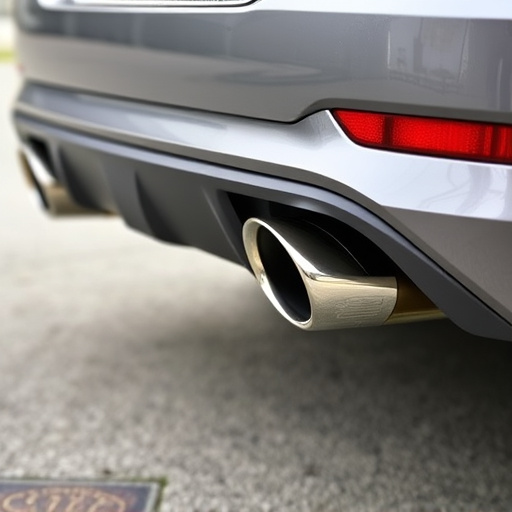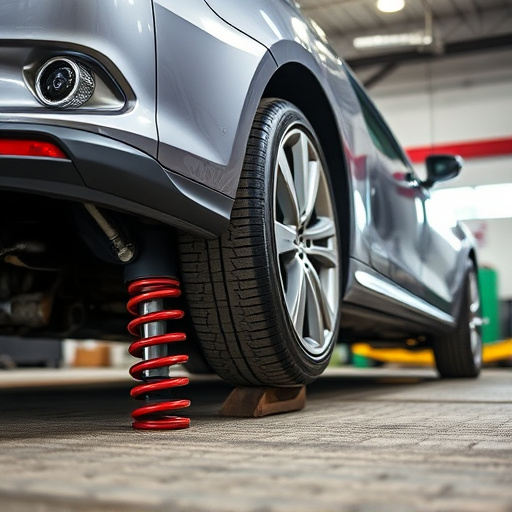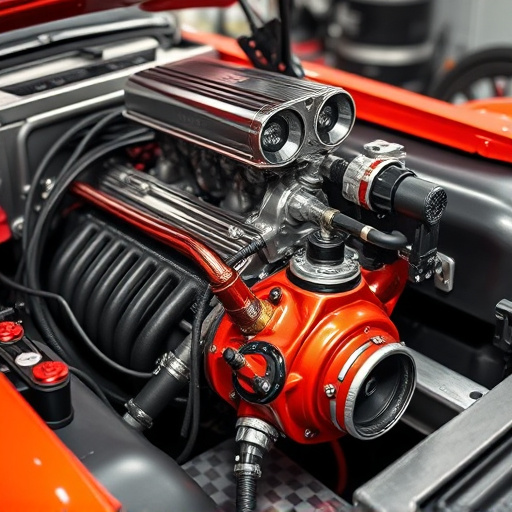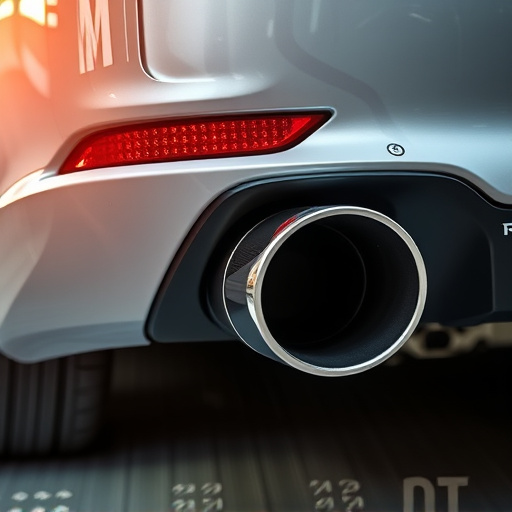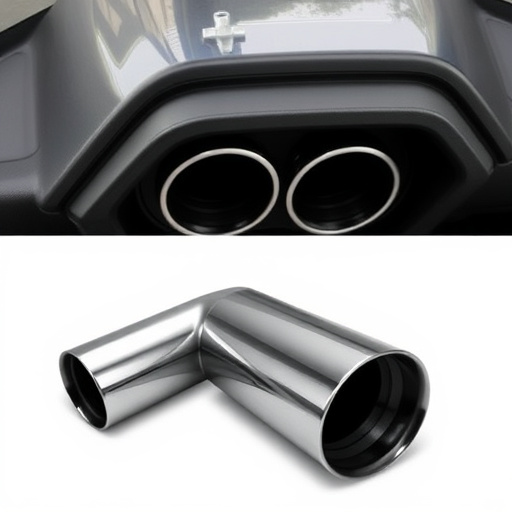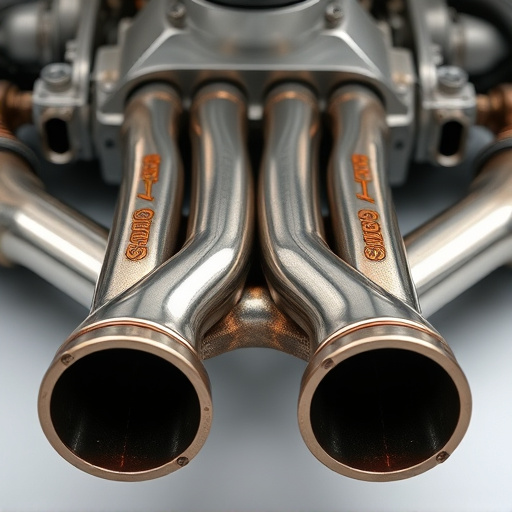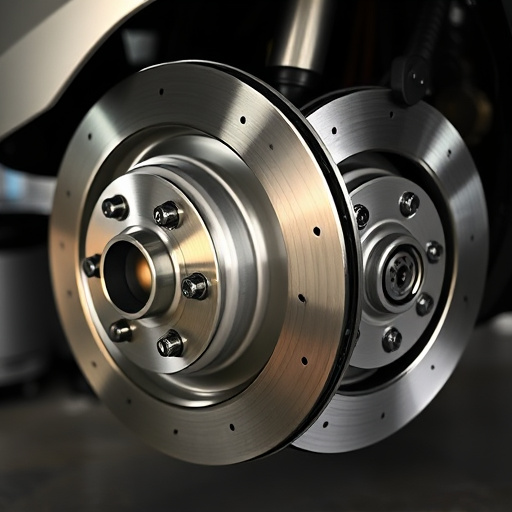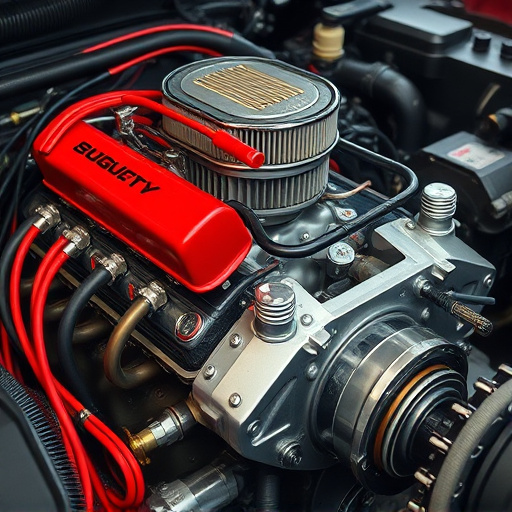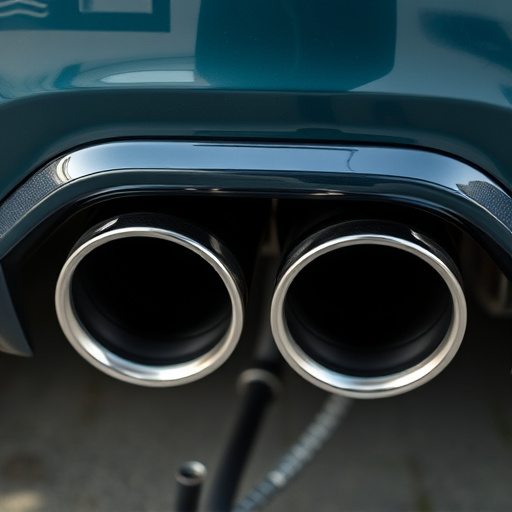Exhaust systems are crucial for high-performance cars, optimizing gas flow to enhance acceleration and top speed by reducing backpressure. Key components like headers, catalytic converters, mufflers, and tailpipes work together with air intake systems. Choosing the right system involves configuration, material, and design features, with stainless steel catback systems often recommended for optimal performance. Quality tuning and mufflers balance daily driving and track-day performance.
Exhaust systems are a vital component in enhancing the performance of any car. Beyond simply reducing noise, these systems play a crucial role in improving acceleration and top speed. By understanding how they work—from their basic function and components to their intricate impact on engine output—car enthusiasts can make informed decisions when choosing the right exhaust system for optimal performance. In this article, we’ll explore each aspect to ensure you’re equipped with knowledge about exhaust systems for cars.
- Understanding Exhaust Systems: Their Basic Function and Components
- The Impact of Exhaust Systems on Acceleration and Top Speed
- How to Choose the Right Exhaust System for Optimal Performance
Understanding Exhaust Systems: Their Basic Function and Components
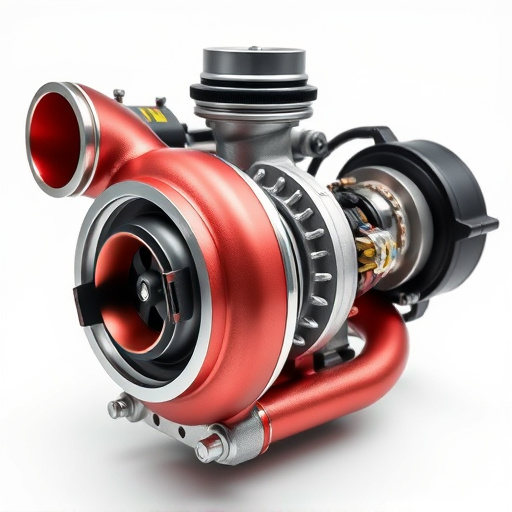
Exhaust systems are a crucial component of any high-performance car, playing a vital role in enhancing both acceleration and top speed. At its core, an exhaust system facilitates the expulsion of burnt gases from the engine, a process that might seem straightforward but is actually complex and finely tuned. It starts at the engine block, where cylinders burn fuel to create power, generating exhaust gases that need a safe and efficient exit route.
These systems consist of several key parts, each serving a specific function. The headers collect exhaust gases from multiple cylinder banks, merging them into a single pipe. This is followed by the catalytic converter, which reduces harmful emissions while allowing essential gases to pass through. Downstream, mufflers muffle the noise generated by the escaping gases, and finally, the tailpipe provides an outlet for the treated exhaust. In addition to these core components, modifications like coilover kits or suspension kits can further enhance vehicle performance by optimising the exhaust’s layout and reducing backpressure, contributing to improved acceleration and top speeds.
The Impact of Exhaust Systems on Acceleration and Top Speed
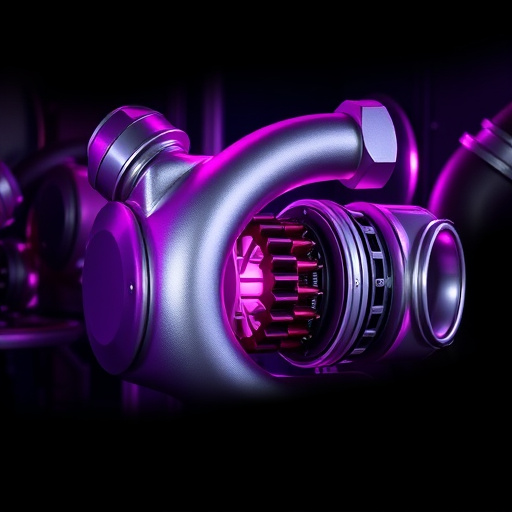
The design and functionality of exhaust systems for cars play a significant role in enhancing their performance capabilities, particularly when it comes to acceleration and top speed. These systems are not merely about reducing noise; they are meticulously engineered to optimize the flow of gases, which directly impacts an engine’s power output. By facilitating efficient gas expulsion, exhaust systems enable smoother combustion, resulting in increased torque and horsepower.
One key component contributing to this improvement is the muffler tips, which provide a controlled exit for exhaust gases, reducing backpressure. This reduction allows for better breathing of the engine, enhancing its ability to deliver power swiftly. Additionally, the interaction between exhaust systems and air intake systems can create a harmonious performance dynamic. Well-designed exhausts can direct spent gases away from the intake, ensuring optimal air flow into the engine, thus further bolstering acceleration and top speed potential, especially during high-performance driving conditions.
How to Choose the Right Exhaust System for Optimal Performance
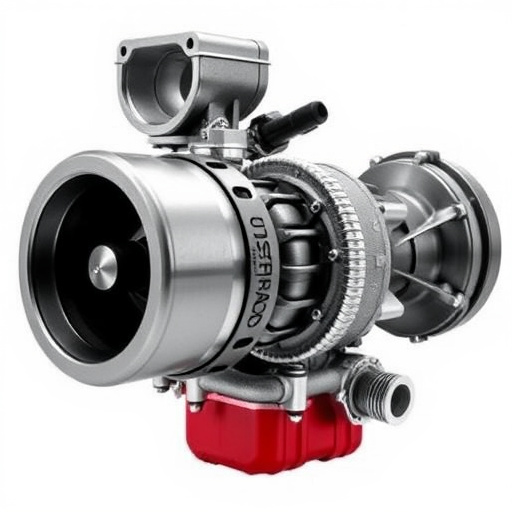
Choosing the right exhaust system is crucial for maximizing your vehicle’s performance. The primary considerations when selecting an exhaust system are the type of configuration (e.g., catback, midpipe, or complete system), material (stainless steel, aluminum, or carbon fiber), and design features like headers and mufflers. For optimal acceleration and speed, a high-flow catback system with stainless steel construction is often recommended, as it reduces backpressure in the exhaust, allowing for greater engine efficiency. These systems typically include advanced flow designs that facilitate smoother gas exchange, enhancing both power delivery and vehicle performance.
Additionally, focusing on quality brake components and ensuring proper tuning of the exhaust system can significantly impact overall vehicle performance. While exhaust mufflers play a critical role in noise reduction, high-performance systems often feature tuned lengths to optimize exhaust note and efficiency. It’s important to balance these factors—quiet operation for daily driving versus aggressive sound and improved performance for track days—to select an exhaust system that aligns with your specific needs and preferences.
Exhaust systems play a pivotal role in enhancing a car’s performance, especially regarding acceleration and top speed. By efficiently removing exhaust gases, these systems reduce backpressure, allowing the engine to breathe more freely and deliver increased power. Choosing the right exhaust system, tailored to your vehicle’s needs, can significantly improve both acceleration and overall speed. Whether it’s a sportier drive you seek or a need for better fuel efficiency, understanding the impact of exhaust systems is key to making informed decisions when modifying your car.





